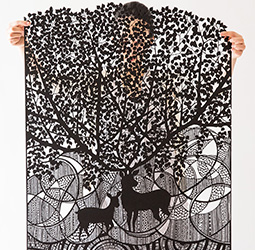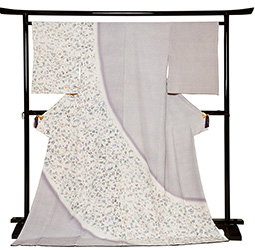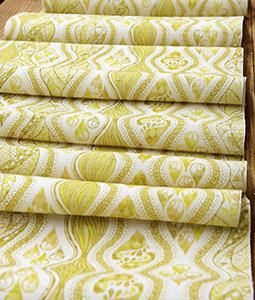Home > Highlighting JAPAN > Highlighting Japan January 2017 > Innovative Artists
Highlighting JAPAN
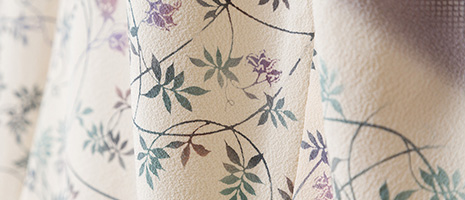
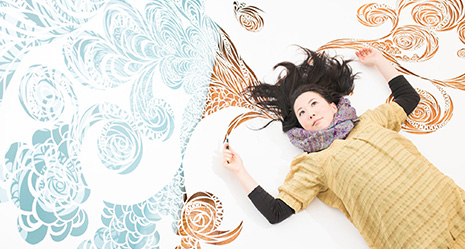
Cutting-Edge Kimono
Designer Risa Kojo brings a deep understanding of the history of her art to the intricate, age-old craft of Ise-katagami pattern making.
Kimono fabric design traditionally draws on the skills of a designer, who creates the patterns, a stencil carver, who cuts the patterns into paper stencils, and a dyer, who uses the stencils to dye the fabric.
Risa Kojo is a pattern designer who has received a great deal of attention in recent years for the contemporary flair she brings to kimono design.
Kojo moved to Boston in the United States with her family when she was a high school student, and studied graphic design at the School of Visual Arts in New York. After graduating in 2004, she began working as a freelance graphic designer. However, she returned to Japan in 2010.
“Without exception, every skillful creator has an understanding of his or her background. And they incorporate it into their expression as their original style,” says Kojo. “I therefore asked myself, ‘What is my background?’ If I did not face this question, I would become stuck one day. I therefore decided to return to Japan.”
Shortly after Kojo returned to Japan, she stayed in Mie Prefecture for business during the period of preparation for the Shikinen Sengu of Ise Shrine. The Shikinen Sengu is a ceremony that takes place every twenty years, when all the shrine buildings are rebuilt. The ritual has been repeated at Ise Shrine for 1,300 years. In addition to Ise Shrine, Mie Prefecture and neighboring Wakayama and Nara Prefectures are home to a number of age-old sacred sites including the World Heritage Kumano Kodo Pilgrimage Routes.
“During my stay in Mie Prefecture, I experienced culture shock in so many situations. One of these was when I visited a shrine sacred to a big rock called Hana no Iwaya, where I was overwhelmed by the energy of the place,” Kojo says. “The people living there had a strong sense of being protected and guarded by the gods. I realized that in Japan, a sense of awe for unseen power has been passed down from ancient times to the present day. At that moment, I felt that I had approached the background I was seeking.”
In Mie Prefecture, Kojo encountered the traditional craft of Ise-katagami, which has a history of over 1,000 years. Ise-katagami is stencil paper used in the pattern-dyeing of kimono fabric. Ise-katagami is distinguished by its fine-cut, intricate patterns.
Ise-katagami stencils are produced by highly skilled carvers who cut patterns into traditional Japanese paper with a stencil carving knife based on the pattern designs created by designers. Kojo, who had been making papercutting artwork as a form of art expression while working as a graphic designer, was fascinated by the stunning patterns of Ise-katagami and its craftsmanship.
While learning patternmaking for katagami stencils, Kojo deepened her exchanges with the craftspeople. Soon, one of the Ise-katagami carving masters advised her to become a pattern designer, saying, “To pass down the tradition of kimono in the future, we need new patterns just like those you create.”
“I always draw patterns by hand, because the differences in pen pressure and strokes create pauses and inconstancy unique to handwork,” says Kojo. “Not only pattern design, but also the craftspersonship of the kimono involves this beauty of inconstancy.”
While designing kimono patterns as a pattern designer for Ise-katagami stencils, Kojo also organizes events such as papercutting workshops and exhibitions of her own artwork produced by the techniques used in creating Ise-katagami stencils.
“I am convinced that nothing but what is created by hand will enrich people,” says Kojo. “My art-making is based on communicating with people through artwork.”
© 2009 Cabinet Office, Government of Japan
